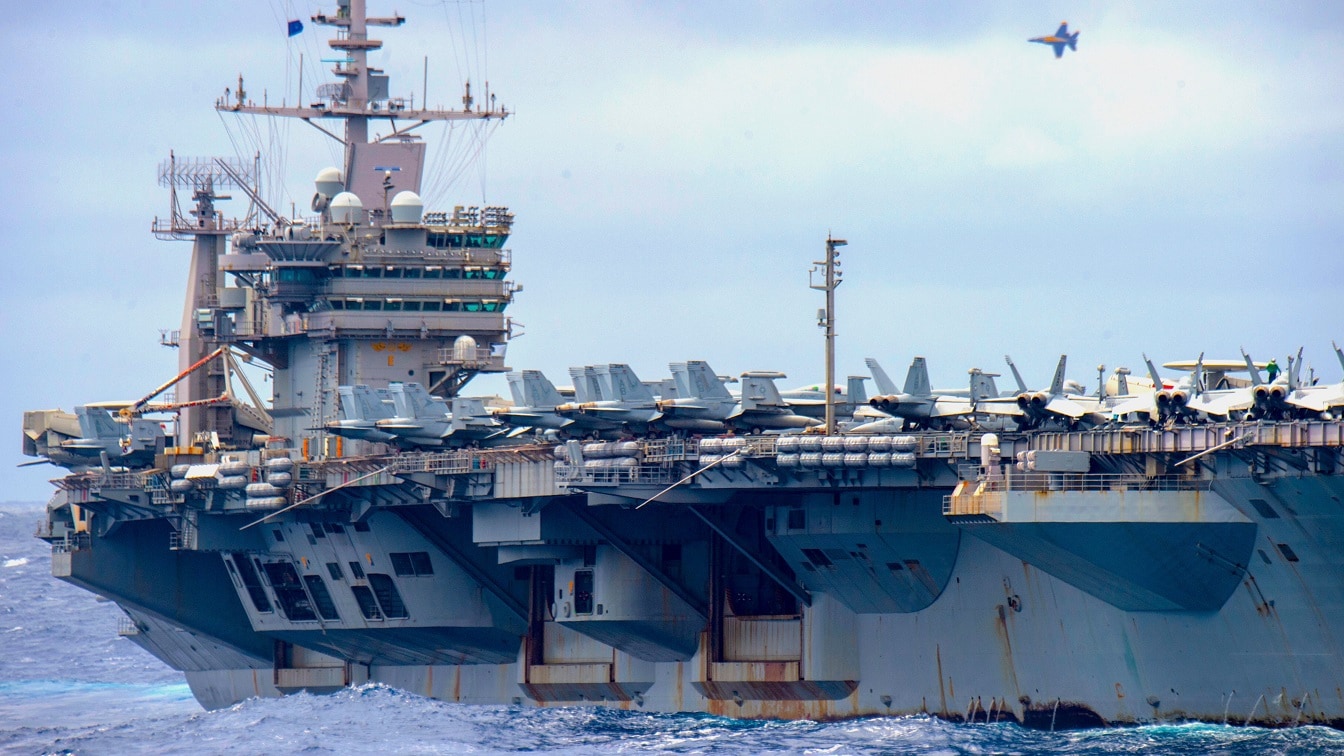Two NATO Aircraft Carriers are Heading to the Arctic: The old U.S. Navy recruiting ads used to proclaim “join the Navy and see the world.” While that still remains true, and the Navy sends warships around the globe, this month sailors aboard the Nimitz-class aircraft carrier USS Harry S. Truman (CVN-75) will have to bundle up as they’re heading to Arctic Circle to take part in the Norwegian-led Exercise Cold Response in March.
The carrier and her strike group won’t be alone. With some 35,000 soldiers from 28 nations scheduled to participate, Cold Response 2022 will be the largest military exercise inside the Arctic Circle in Norway since the 1980s. USS Harry S. Truman won’t even be the only carrier present. The Royal Navy’s HMS Prince of Wales, which became the flagship of the NATO Response Force Task Group earlier this week, will be among the British warships that will take part in the exercises.
Preparation for the long-time planned exercise has been underway since late last year, and NATO officials have reaffirmed that it is not directly linked to the current standoff between NATO and Moscow over Russia’s massive military buildup of forces near the Ukrainian border. However, as any conflict in Eastern Europe would spill over to the Arctic, NATO is increasing its training missions in the region.
The Kola Peninsula is home to some of Russia’s most powerful weapon systems, including its advanced 3M22 Tsirkon anti-ship hypersonic missiles, as well as the naval component of Moscow’s strategic nuclear triad. According to The Barents Observer, Tsirkon missiles launched from Russia in the Arctic could reach targets in Norwegian Sea in about 10 to 15 minutes. The hypersonic missiles, which can maneuver in flight, could potentially bypass any U.S. Navy or Royal Navy surface-to-air self-protection systems.
Return Visit
For some of the crew on the USS Harry S. Truman it will be a “return voyage” of sorts. In October 2018, the nuclear-powered carrier sailed into the Norwegian Sea, the first time a U.S. Navy carrier crossed into the Arctic Circle since USS America participated in the NATO exercised dubbed North Star in September 1991 – and notably just months before the collapse of the Soviet Union.
In addition to the challenges that come with traveling to such extreme conditions, this year’s exercise will also have to contend with the ongoing pandemic. However, precautions are being put in place to ensure that Cold Response doesn’t become a super spreader event. NATO announced that it will work closely with civilian health authorities and with local authorities throughout the exercises.
Cold Response will take place in Southeast Norway, Central Norway and Northern Norway, while the main emphasis of the activity in the south will be around Rena, Elverum, Flisa, Sessvollmoen and Jørstadmoen. The goal of the exercise is to ensure that Norwegians and allies have the ability to carry out extensive joint operations in an environment that is characterized by high-intensity combat, under demanding weather and winter conditions.
Peter Suciu is a Michigan-based writer who has contributed to more than four dozen magazines, newspapers and websites. He regularly writes about military small arms, and is the author of several books on military headgear including A Gallery of Military Headdress, which is available on Amazon.com. Peter is also a Contributing Writer for Forbes Magazine.

